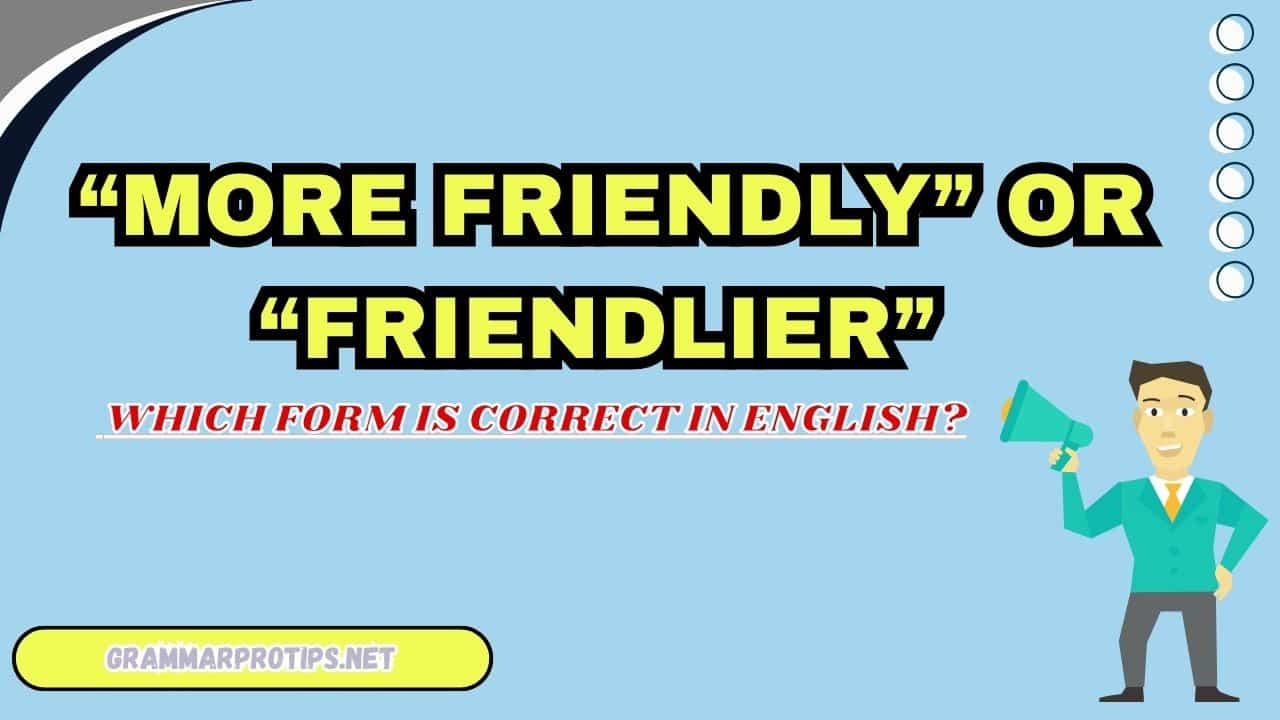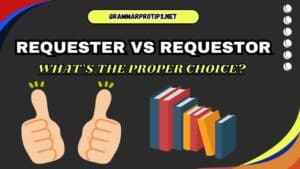In the world of English grammar, few things cause as much confusion as the use of comparatives and superlatives. When it comes to adjectives like “friendly,” native and non-native speakers alike often wonder, “Should I say more friendly or friendlier?”
Is there a difference, or is one form preferred over the other? The good news is, there are rules, but understanding them takes a deeper dive into adjective usage and how comparison works in English.
In this article, we’ll explore both forms more friendly and friendlier and explain the rules governing their use. Additionally, we’ll consider real-world scenarios like emails, conversations, and feedback to see how these forms function in context.
And to help clarify the difference further, we’ll also discuss other relevant aspects of grammar, including prepositions, comparative rules, and sentence structures.
Along the way, we’ll highlight the correct forms with examples, provide a handy table for quick reference, and even discuss some of the common mistakes that people make in using adjectives.
So, let’s get started!
Understanding the Basics: What is an Adjective?
An adjective is a word that describes or modifies a noun or pronoun. Adjectives can tell us what something is like, how much or how many there are, and sometimes they even help convey opinions. In English, adjectives are an essential part of speech, often used to make sentences more interesting or to add additional detail.
For example:
- A friendly dog.
- A friendly smile.
- A friendly neighbor.
In these examples, “friendly” is the adjective describing a noun dog, smile, and neighbor. It tells us that the dog, smile, and neighbor are warm, approachable, and easygoing.
When to Use “More Friendly” or “Friendlier”
Now that we know what an adjective is, let’s delve into how to form comparatives for adjectives like “friendly.”
In English, comparatives are used when you’re comparing two things (e.g., two people, two places, or two actions). The comparative form of an adjective often follows one of two patterns:
- Adding -er to the adjective (e.g., smarter).
- Adding more before the adjective (e.g., more intelligent).
However, not all adjectives follow the same pattern, especially when it comes to adjectives that are two syllables long like friendly.
More Friendly vs. Friendlier: Which One to Choose?
Friendlier – The More Natural Choice
In most cases, when comparing two things or people, we use the comparative form of “friendly,” which is friendlier. This is the standard form in comparative adjectives when the word has two syllables (like “friendly”) and ends in y.
For example:
- John is friendlier than Tom.
- Sara is friendlier than I thought.
Example: Friendly Email Scenario
Subject: Feedback on Your Presentation
Hi Mark,
I just wanted to mention that your presentation today was friendlier than the last one. You seemed much more relaxed, and it was easy to engage with you. Great job!
Best regards,
Olivia
In this example, “friendlier” is used to compare the two presentations showing that one was more approachable or warm than the other.
More Friendly – Sometimes the Better Choice
While friendlier is usually the preferred comparative form, you may encounter situations where more friendly sounds more appropriate. This is typically when the adjective feels more comfortable in the sentence structure, or when you want to place extra emphasis on the gradual nature of the change.
For example:
- Mary is more friendly than she used to be.
- Our group is becoming more friendly with each meeting.
Understanding When to Use “More Friendly”
Use more friendly in these situations:
- When you want to emphasize the degree or gradual improvement.
- When you’re adding additional descriptive words to the sentence (e.g., more emphasizes the change over time).
Example: Social Group Feedback Email
Subject: Group Dynamics
Hi Sarah,
I wanted to provide feedback on the social group. Everyone has become more friendly over the past few weeks. It’s great to see people interact more openly and positively now than when we first started. I think your efforts have made a big difference!
Best,
Lucas
Here, “more friendly” emphasizes how the change took place over time, which friendlier wouldn’t capture as well. This makes “more friendly” a more natural choice in the sentence structure.
The Rule of Thumb: When to Use “More” or “Er”
English grammar often suggests two main strategies for forming comparatives:
- For one-syllable adjectives: Add -er (e.g., “faster,” “smarter”).
- For adjectives with two or more syllables: Use more or less before the adjective (e.g., “more friendly,” “more intelligent”).
However, adjectives like friendly, which have two syllables and end in y, follow the more traditional rule: add -ier to form the comparative (e.g., friendlier).
To summarize:
| Adjective | Comparative Form | Example Sentence |
|---|---|---|
| Friendly | Friendlier | “He’s much friendlier now than before.” |
| Intelligent | More intelligent | “She’s more intelligent than anyone else.” |
| Beautiful | More beautiful | “The sunset was more beautiful today.” |
| Happy | Happier | “She’s happier than I’ve ever seen her.” |
Common Mistakes with “Friendly” in Comparatives
While the rules are relatively straightforward, there are some common mistakes that people make when using adjectives in comparison. Let’s address a few of the most frequent ones:
1. Using “Do to” Instead of “Due to”
One of the most frequent grammatical errors related to comparison involves “do to” versus “due to”. These two phrases are often confused, even though they have different meanings.
- “Do to” is a common mistake and should never be used as a replacement for “due to.”
- “Due to” is the correct phrase when you want to indicate a cause or reason.
Correct Usage of “Due to”
- Example 1: The meeting was canceled due to technical difficulties.
- Example 2: Due to the heavy traffic, we were late.
Incorrect Usage of “Do to”
- Example 1: The meeting was canceled do to technical difficulties. (Incorrect!)
2. Confusing the Superlative Form with Comparatives
Another mistake people often make is confusing the superlative and comparative forms of adjectives. When you want to compare more than two things, you should use the superlative form, not the comparative.
- Comparative: “She’s friendlier than him.”
- Superlative: “She’s the friendliest person in the group.”
Final Thoughts on “More Friendly” vs. “Friendlier”
So, which form should you use more friendly or friendlier?
The truth is, both are grammatically correct, but friendlier is typically the more natural choice for most situations, especially when you’re comparing just two things.
On the other hand, more friendly can be used when you want to emphasize gradual changes or degrees of difference.
Key Takeaways:
- Use friendlier to compare two things or people.
- Use more friendly when emphasizing a change over time or when the sentence structure fits better.
- Don’t confuse due to and do to they have different meanings and uses in grammar.
- Use the superlative form when comparing more than two things (e.g., friendliest).
By keeping these tips in mind, you’ll find it easier to use both forms correctly and more naturally in conversation and writing.
Summary Table: Comparing “More Friendly” and “Friendlier”
| Comparative Form | Context | Example Sentence |
|---|---|---|
| Friendlier | Compare two things | “She is friendlier than her sister.” |
| More friendly | Emphasize gradual change or larger degree | “He’s become more friendly over time.” |
Read more knowledgeable blogs on Grammar Pro Tips

Sienna Mauldon is a passionate writer and grammar expert. On her blog, she shares easy-to-follow guides to help readers master grammar rules and improve their writing. With a love for language and teaching, Sienna makes grammar simple and fun for everyone, from beginners to experienced writers.








